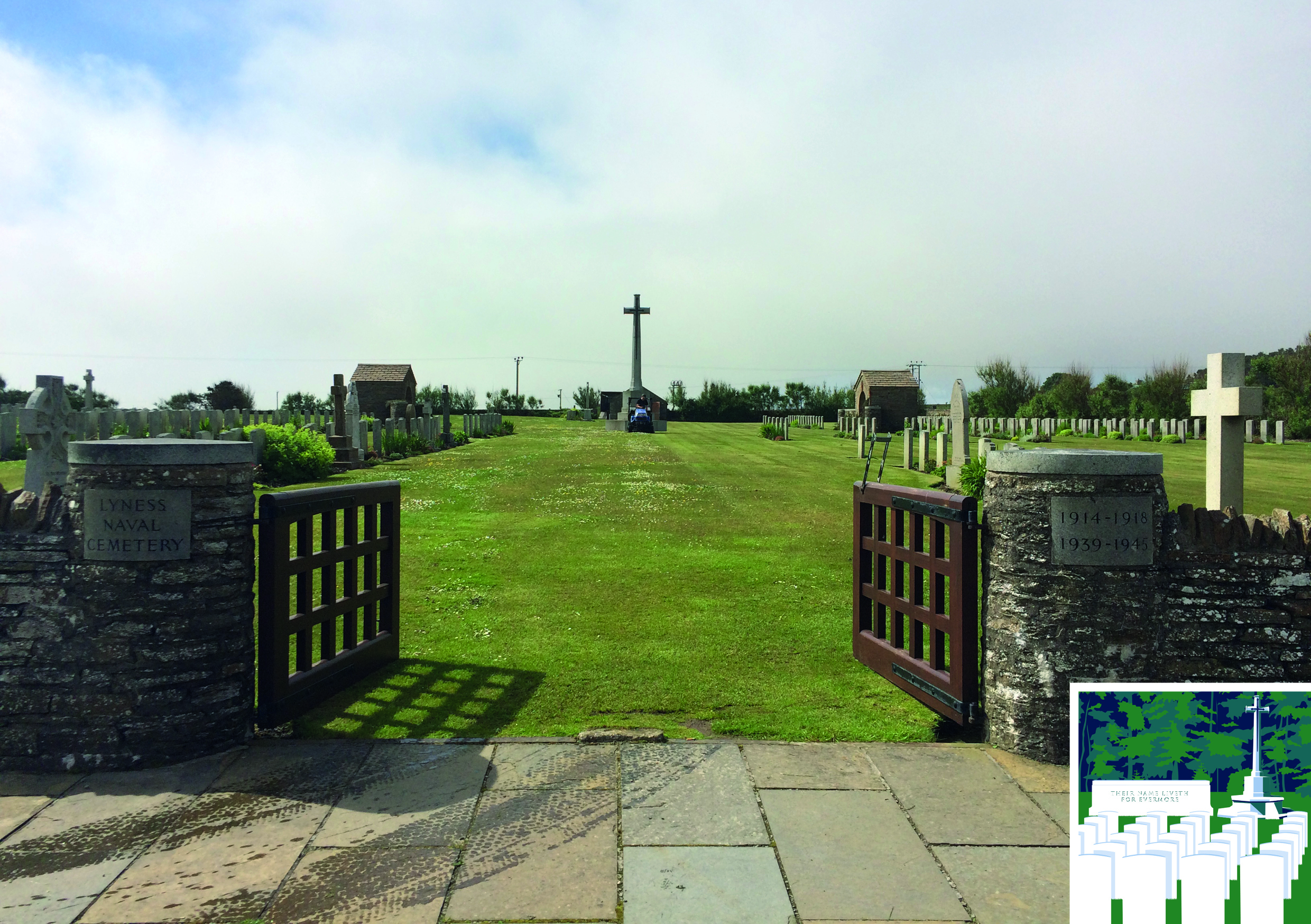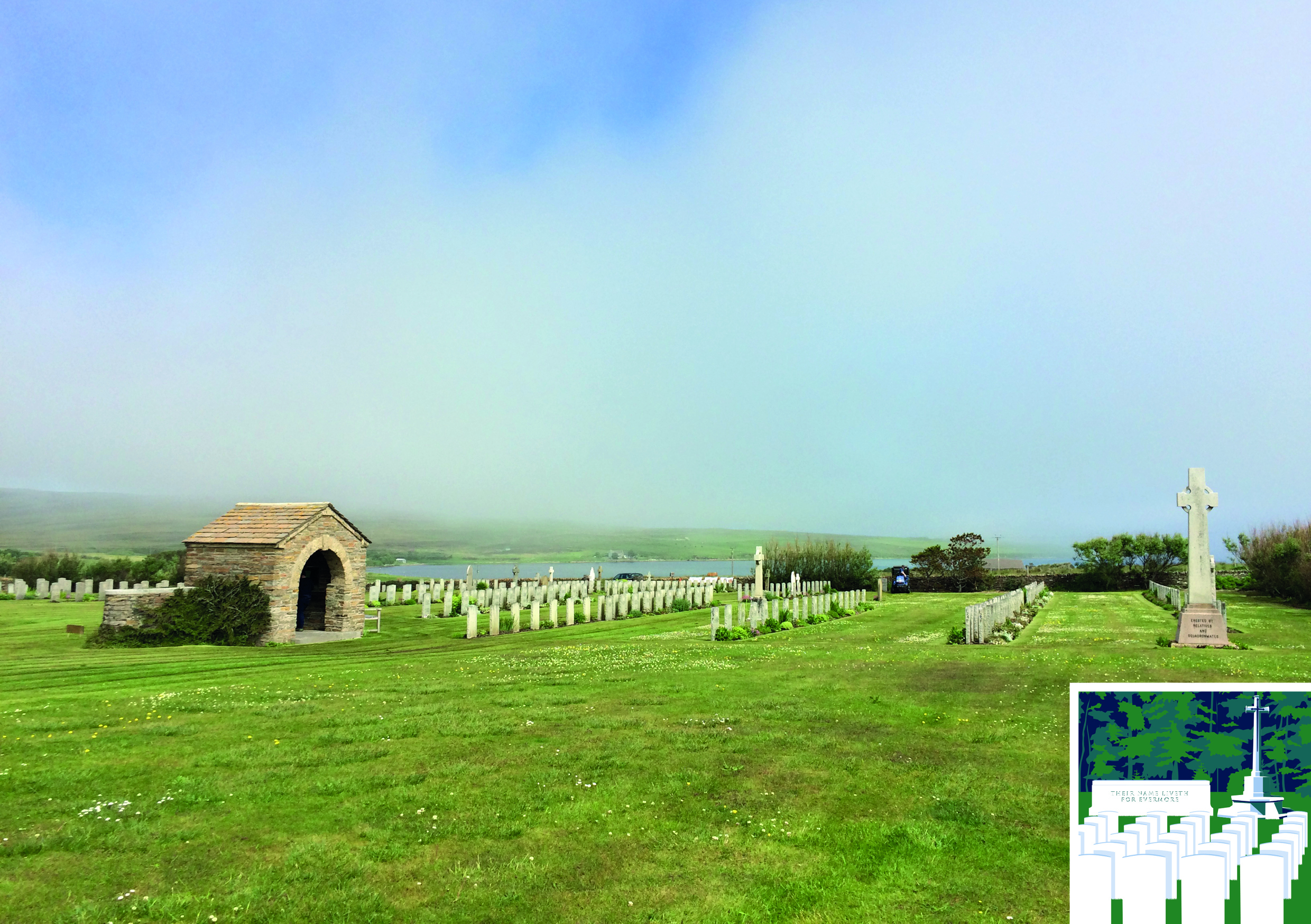Discover Lyness (Royal Naval) Cemetery
Scapa Flow was a Royal Naval base during both the First and Second World Wars. Sailors began burying their shipmates at Lyness in 1915 and the WAR cemetery remained in use until 1946.
![]()
Scapa Flow was a Royal Naval base during both the First and Second World Wars. The arrival of the Grand Fleet at Scapa from 1914 transformed Orkney into one of the world’s most important strategic locations. Historically, the home ports of the Royal Navy were in the south of England, but now a base from which to control the northern entrance to the North Sea was essential to counter the threat posed by Germany. The natural defences of the sheltered harbour were strengthened, and Scapa became a ‘city of ships.’
Find out more

A corner of Scapa Flow during the First World War. © IWM SP 1680
Sailors began burying their shipmates at Lyness in 1915 and the cemetery remained in use until 1946. The Imperial War Graves Commission erected a Cross of Sacrifice here in 1925, in grey Aberdeen granite rather than Portland limestone, and took over responsibility for the maintenance of this cemetery from the Admiralty in 1927.
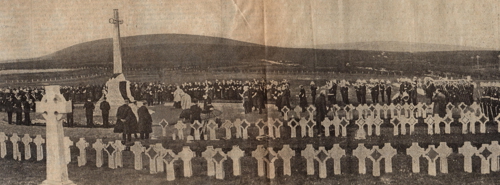
Cross of Sacrifice unveiling ceremony, September 1925. CWGC archive.
On 30 May 1916 the Grand Fleet left Scapa Flow for what would become known as the Battle of Jutland, the only clash between the main fleets of the British and German navies in either World War. Some 110,000 men fought in 150 British and 100 German vessels. 14 British and 11 German warships were lost or damaged beyond repair and more than 6,000 Royal Navy sailors and 2,500 Germans were killed, while many others suffered serious burns and wounds. Most of the Commonwealth dead were lost with their ships or buried at sea, but HMS Barham and Malaya returned to Scapa with dead and wounded on board, 38 of whom lie in this cemetery.
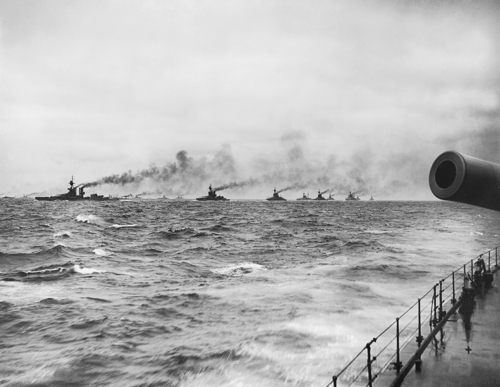
The British Grand Fleet cruising in line in the North Sea on the eve of the Battle of Jutland, May 1916. © IWM Q 18121
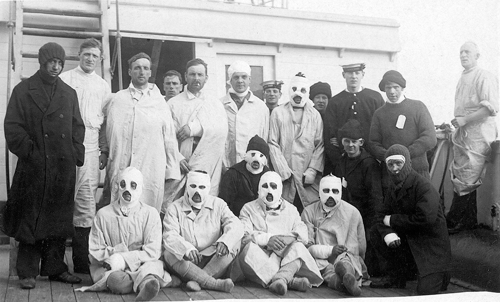
Survivors of Jutland on board a hospital ship in Scapa. National Museum of the Royal Navy, 1990/296/27.
In both wars, many of those laid to rest here died when their ships were lost nearby. On the evening of 5 June 1916, the armoured cruiser HMS Hampshire struck a German mine off Marwick Head in heavy weather and sank within 15 minutes. All but 12 of over 650 on board perished, either trapped below decks or swept away in the raging seas; more than 160 whose bodies were recovered from the sea and the shore are buried here. On the night of 13-14 October 1939, a U-boat penetrated Scapa Flow and torpedoed the battleship HMS Royal Oak. Her hull torn open, she sank in 13 minutes; more than 830 men died. The few survivors, dressed in whatever spare clothing could be found on other ships at anchor, buried 26 of their shipmates here, five of whom remain unidentified.

Survivors of the Royal Oak march in the burial procession for their shipmates, Lyness. Orkney Library & Archive, L339-2.
During the Second World War, Scapa would again house the Home Fleet. This time, as many as 12,000 military personnel and civilian workers came to Orkney, not just the ships of the fleet. A large naval base grew next to the cemetery - hundreds of huts were constructed, and shore-based hospital facilities as well as hospital ships cared for the sick and wounded in action brought back to Scapa. The church hut was next to the cemetery and a new gate was made in the wall to make it easier for funeral parties to enter the site. Some 200 Commonwealth servicemen would join the 440 of the First World War buried in Lyness. Over 160 different ships are represented. Australian, Canadian, Indian, New Zealand and Norwegian servicemen lie here, along with the graves of 18 Germans.
Most of the servicemen and women of the Royal Navy lost or buried at sea during the two world wars are commemorated by name on one of our large naval memorials at Plymouth, Portsmouth or Chatham. Fleet Air Arm missing are named at Lee-on-Solent, those of the Royal Naval Patrol Service at Lowestoft, and 1,400 merchant seamen who joined the Royal Navy for the Second World War are inscribed on the Liverpool Naval Memorial.

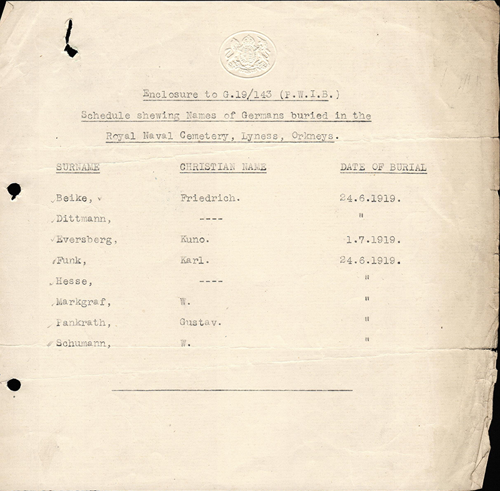
Letter from the Admiralty providing list of German casualties buried at Lyness who died during the scuttling of the Imperial German High Seas Fleet, 21st June 1919

Photograph of the graves of three unknown British seamen at Lyness Royal Naval Cemetery, showing the original naval pattern cross design headstones, 10th September 1923
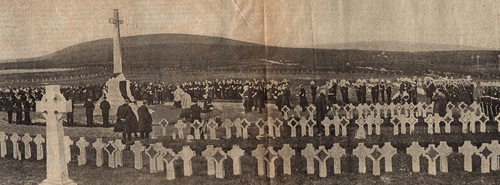
Newspaper cutting with photograph of the ceremony held at the cemetery for the unveiling of the Cross of Sacrifice, 29th September 1925
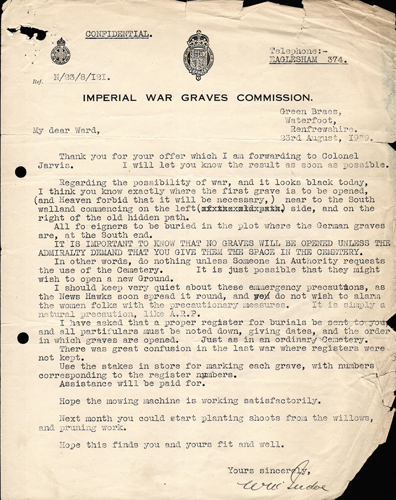
Letter from IWGC Area Inspector William McIndoe to IWGC Gardener Caretaker William Ward, regarding procedures to follow at Lyness in the event of an outbreak of war, 23rd August 1939

Letter, dated 3rd February 1940, from the Admiralty Civil Engineer-in-Chief to the IWGC regarding the burial in a common grave of 26 casualties from the sinking of the HMS Royal Oak, which had occurred on the 14th October 1939


Architectural drawings of Lyness Royal Naval Cemetery, showing the location of the Cross of Sacrifice (1924) and the expanded cemetery following the Second World War (1966)
Visit Lyness (Royal Naval) Cemetery
The cemetery is on the Island of Hoy, which is part of the Orkney Islands. To visit the cemetery, travel to Hoy using a ferry from the main Orkney island. The cemetery is a five-minute drive from the ferry terminal and is signposted. It is possible to park at the side of the road outside the cemetery.

Comely Bank Cemetery is situated in the heart of Edinburgh and is the final resting place of over 300 service personnel.
Edinburgh (Comely Bank) Cemetery
The CWGC care for 570 war graves here, including those of over 350 Polish soldiers, sailors and airmen of the Second World War.
Perth Jeanfield and Wellshill Cemetery
Located on Scotland’s east coast, Arbroath Western Cemetery contains the largest number of war graves of both wars in Angus: 8 First World War casualties and 54 Second World War casualties.
Arbroath Western Cemetery
Just north of Aberdeen’s city centre lies Aberdeen (Trinity) Cemetery & Broadhill Extension which contain the graves and memorials of over 270 Commonwealth servicemen and women of the two world wars.
Aberdeen (Trinity) Cemetery
We care for only 14 graves of men who died during the Second World War in this small Speyside cemetery, but they attest to four different ways that the war touched the Highlands.
Kingussie Cemetery


